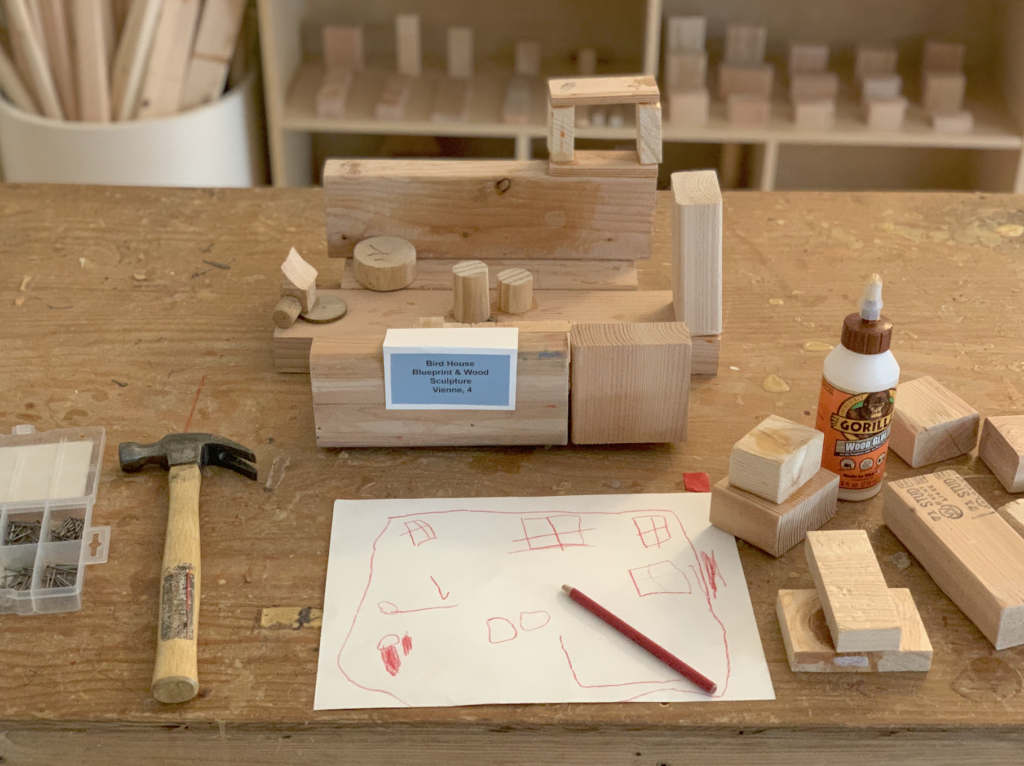Block play is such an important part of the early childhood classroom. It provides potent opportunities for creativity, imagination, problem-solving, and foundational mathematical understandings. It is something that actually has a developmental sequence to it – like writing or drawing. I love to watch the expansion of block play in the kindergarten. It becomes such a world in itself!
I find it fascinating that the way children use the blocks can actually tell me something about their developmental growth cognitively. The stages of block play were developed by Elizabeth Hirsch. Her book, The Block Book (1976), is a must-read.

Stage 1: Tote and Carry (2 and 3 years old)
At this stage, one of the first activities is the act of carrying around the blocks or piling them. It is a full sensory experience as the child experiences the smoothness, the weight, the size, and the sounds they make when they drop the blocks. In this stage, the child is learning about blocks and what blocks can do.

Stage 2: Building Begins (3 years old)
At this stage, a child will pile the blocks to make a tower or lay the blocks on the floor in rows, either horizontally or vertically. There is much repetition in their building. It is in this stage that the first application of imagination occurs as props such as cars or trucks are used on “roads.”

Stage 3: Bridging (3 and 4 years old)
At this stage, children begin to experiment connecting two blocks with a space between them with a third block. Children learn to bridge by trial and error as they begin to explore balance and their eye-hand coordination improves.

Stage 4: Enclosures (4 years old)
At this stage, a child will place blocks to enclose a space. This shows an understanding of the inside and outside. Enclosures, like bridges, become landscapes for imaginative play with props like dollhouse dolls, farm animals, and such. Enclosures and bridging are the first “technical” acts of block building that children accomplish.

Stage 5: Representational Building (4 and 5 years old)
At this stage, you will see children using symmetry, patterns, balance, and designs to create buildings. There is an element of dramatic play to their block-building. The play can include naming the structure and its function (and letting those who interfere or who try to redesign know they are wrong!). If you teach pre-k or Kindergarten you know that if two children are building a specific structure and a third child attempts to alter the structure – upset results!

Stage 6: Complex Building (5 years old and up)
By age 5, the dexterity and skill of block play are quite elaborate! You will see curved buildings, multiple levels, the building over other structures and toys. The children are in the stage of cooperative play and it is not uncommon for discussions of what they want to build, how they may build the structures, and what part each will play in the “drama”. At this stage, it is helpful to have a wide range of sizes and types of blocks available.
References
Hirsch, Elisabeth S. (1996). The Block Book. The National Association for the Education of Young Children (NAEYC).


